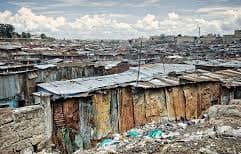What is a Slum ?
Slums are a physical and spatial sign of urban poverty. Individuals living in slums have next to zero access to administrations, for example, water, sanitation, and solid waste gathering. The majority of the lodging structures in slums are sub-standard and don’t conform to neighborhood building regulations. Frequently, slum occupants need lawful ownership for home in which they dwell or whatever viable type of secure residency.

Furthermore, slums are regularly not distinguished by open powers as a vital some piece of the city. This is one of the explanations why there is so little information on slum settlements in numerous nations.
The notion of ‘slums ‘and its definition shift from nation to nation hinging on the Socio-budgetary states of social order. The essential attributes of slums are – “feeble and sick lodging structures, poor ventilation, intense over-gathering, defective arrangement of boulevards, insufficient lighting, lack of safe drinking water, water logging throughout downpours, nonappearance of latrine offices and no accessibility of fundamental physical and social administrations.”
The living conditions in slums are generally unhygienic and in opposition to all standards of arranged urban development and are an imperative element in quickening transmission of different air and water borne ailments. The lawful definition however varies from State to State and country to country.
Planning about and for slums is a important part of city/town planning as the number of slums are increasing in cities. So a town planner should be trained to deal and provide a suitable relocation/rehabilitation for slum people.
Type of Slums
Slums / informal housing can also be classified according to the diverse processes of land /housing supply and varying degree of tenure security in the following manner
- Freehold land (inner city blighted areas).
- Urban villages and land owned by village panchayats
- Chawls/Bustees
- Encroachments on public/private land (squatters)
- Government/private leasehold land (resettlement colonies)
- Slums on the urban periphery
- Illegal land-subdivisions/unauthorized colonies/revenue layouts/gramthana layouts (where land ownership may be legal or quasi legal but land subdivision is illegal)
- Refugee Resettlement Colonies
- Pavement dwellers, although small in percentage, are found in large mega-cities. The main difference is how the administrative /planning system regulates these settlement types.
Read about BPL Identification in India, Slum Areas improvement and clearance Act